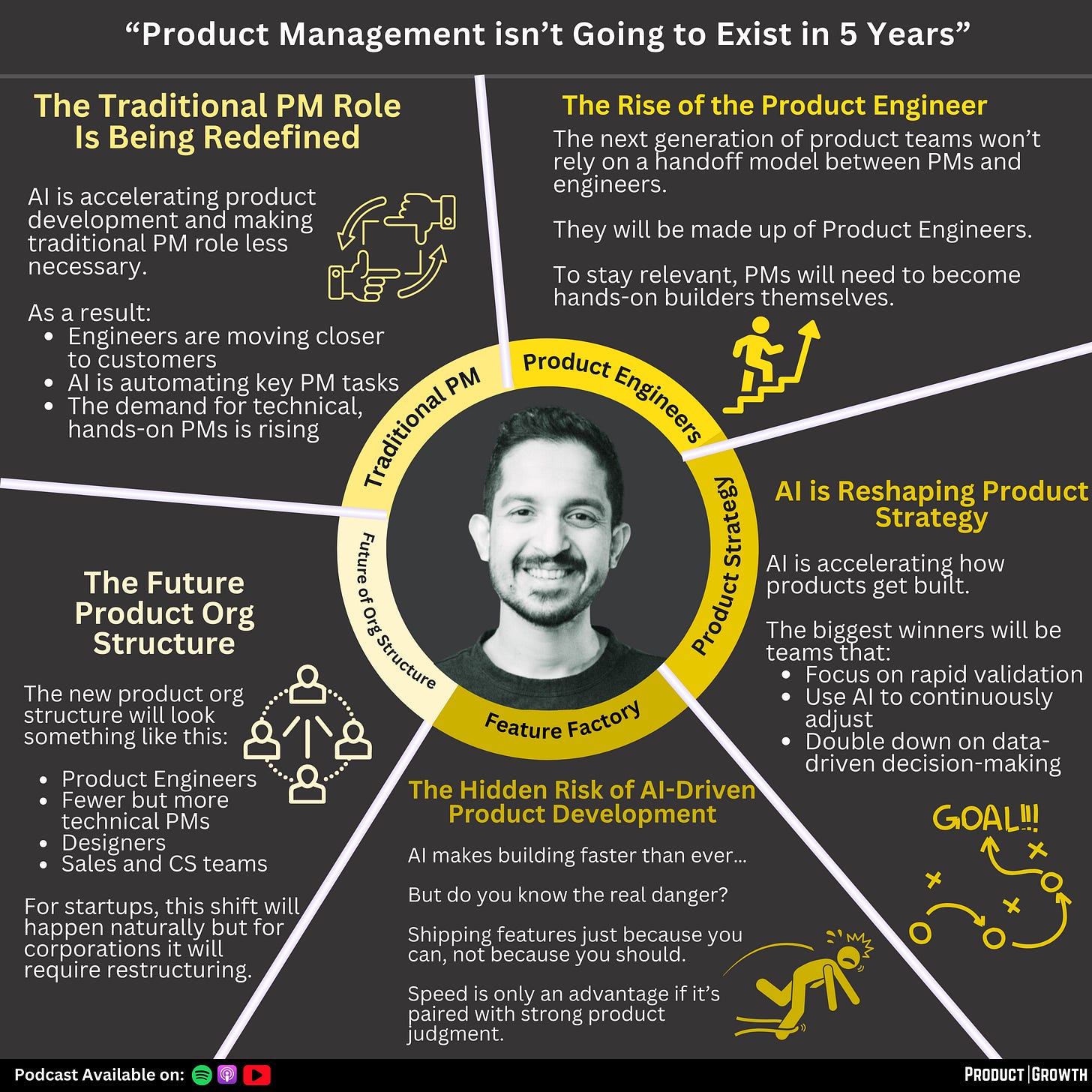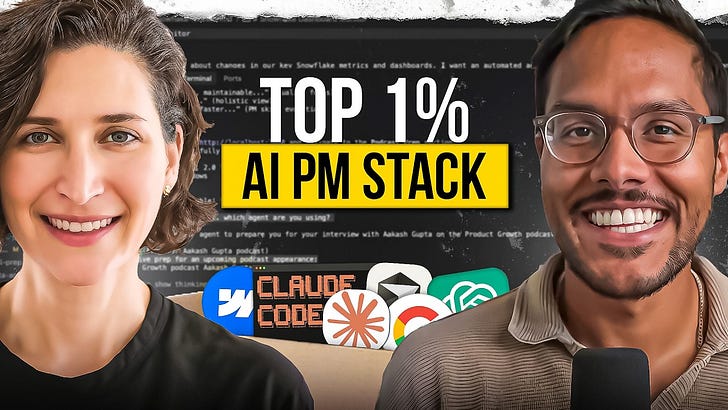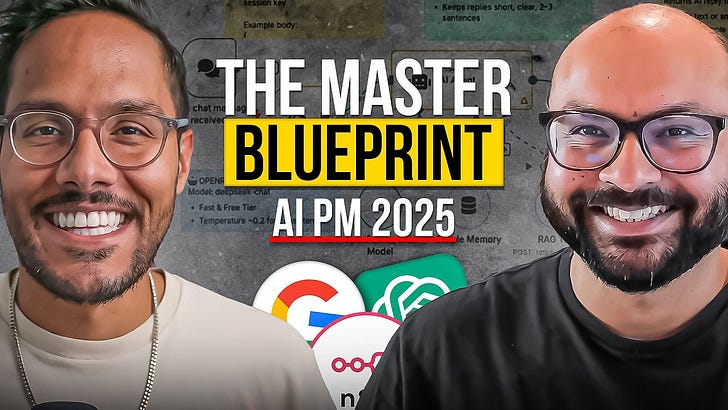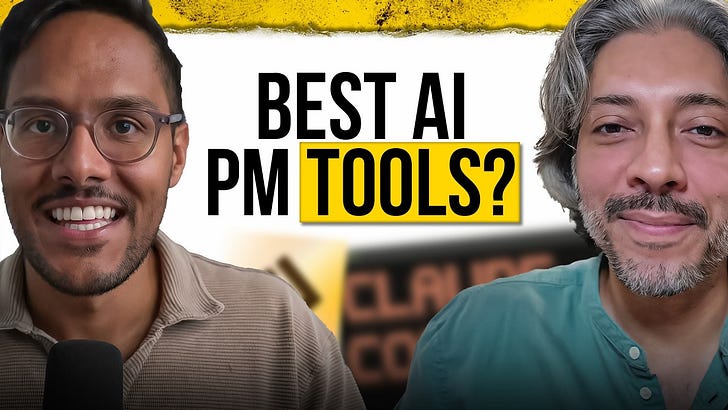Listen now on Apple, Spotify, or YouTube.
And check out our awesome sponsors:
Attio: The next generation CRM built natively for AI
Vanta: The best tool to automate compliance, manage risk, and prove trust
Maven: I’ve just launched my unique curation of their top courses
Today’s Episode
Today’s episode is very special. We have my former manager, and an incredibly important mentor to me.
Abishek (Shek) Viswanathan has been at CPO at Unicorn Apollo.io and Public Company Qualtrics.
And he has some bold takes on the future of product management. Including how PMs will need to adapt - or perish.
If you're a PM wondering how to compete in this AI era, this episode is a must-listen:
AI Tools for Rapid Prototyping (w/ Demo) – 00:17:44
The Two Categories of Product Engineers – 00:45:33
How Companies Will Win by Embracing This Shift – 01:04:38
The Expanding Role of Product Engineers Beyond Building – 01:20:23
Balancing Work and Execution as a Product Leader – 01:34:55
Here are the Key Takeaways
1. The Traditional PM Role Is Being Redefined
For years, product managers have acted as the middle layer between customers and engineering teams.
But this model is breaking down, because AI is accelerating product development and making traditional PM role less necessary.
As a result, product development is shifting, as:
Engineers are moving closer to customers
AI is automating key PM tasks
The demand for technical, hands-on PMs is rising
The future belongs to product builders.
The question is:
Will PMs evolve, or will they be replaced?
2. The Rise of the Product Engineer
The next generation of product teams won’t rely on a handoff model between PMs and engineers.
Instead, they will be made up of Product Engineers.
This is how product engineers operate differently from traditional engineering teams:
They work directly with customers to understand pain points.
They build and iterate prototypes without waiting for a formal PRD.
They own the entire feature lifecycle — from discovery to execution.
PMs who want to stay relevant will need to move beyond documentation and become hands-on builders themselves.
3. AI is Reshaping Product Strategy (Not Just Execution)
AI is accelerating how products get built…
But the bigger shift is in how companies approach product strategy.
The biggest winners will be teams that adapt their product development process to AI’s capabilities.
They will:
Focus on rapid validation and customer-led iteration.
Use AI to continuously adjust based on real-time insights.
Double down on data-driven decision-making.
Companies that don’t rethink their approach will fall into the feature factory trap.
4. The Hidden Risk of AI-Driven Product Development
AI makes building faster than ever…
But do you know the real danger?
Shipping features just because you can, not because you should.
When AI reduces the time and cost of building, teams may launch ideas without validating their impact.
This can lead to:
Too many low-value features that clutter the product.
A lack of prioritization based on real customer needs.
Features competing for user attention instead of driving real adoption.
Speed is only an advantage if it’s paired with strong product judgment.
The teams that win in the AI era will be the ones that balance fast execution with ruthless prioritization.
5. The Future Product Org Structure
The companies that adopt this new way of working will build better products, faster.
Otherwise, they will struggle with inefficiency, bloated product teams, and slow decision-making.
The new product org structure will look something like this:
Product Engineers — Who own feature development
Fewer but more technical PMs — Who can prototype and iterate
Designers — Who focus on systems and platform-wide consistency
Sales and CS teams— Who are more consultative and technically skilled
For startups, this shift will happen naturally.
They move fast and adapt quickly.
But for larger organizations, this will require breaking old habits, restructuring teams, and redefining roles.
References
Tools:
Cursor – Coding assistant that helps engineers prototype and build faster.
V0 by Vercel – Helps to generate functional front-end prototypes using AI.
Neon – A modern, Serverless Postgres database built for scalability and efficiency.
ShadCN – A UI component library that simplifies front-end development with reusable design elements.
Replit – Coding platform that allows for rapid prototyping and iteration.
Strategy: Expected Outcomes Model – PMs must define the expected impact of features before development to avoid wasted effort.
Framework: Jobs-to-Be-Done (JTBD) – A framework for understanding user needs by focusing on the "job" a product helps them accomplish.
Where to find Abishek
If you prefer to only get newsletter emails, unsubscribe from podcast emails here.
Email productgrowthppp at gmail for advertising opportunities.
Related Episodes
If you enjoyed this episode, you might enjoy these other episodes:
Up Next
We are following up on exactly how to do AI prototyping in-depth with Colin Matthews.
We also have some great episodes coming with Marty Cagan (The legend himself) and Brian Balfour (Founder, Reforge; & Fmr VP Growth, Hubspot).
In the newsletter, look out for these pieces up next:
Candidate-Market Fit: The Advanced Guide for PMs
Rock the System Design Interview
How to Scale the Impact of Your Experimentation Program
Cheers,
Aakash
P.S. Consider asking your employer to expense a subscription to this newsletter.













